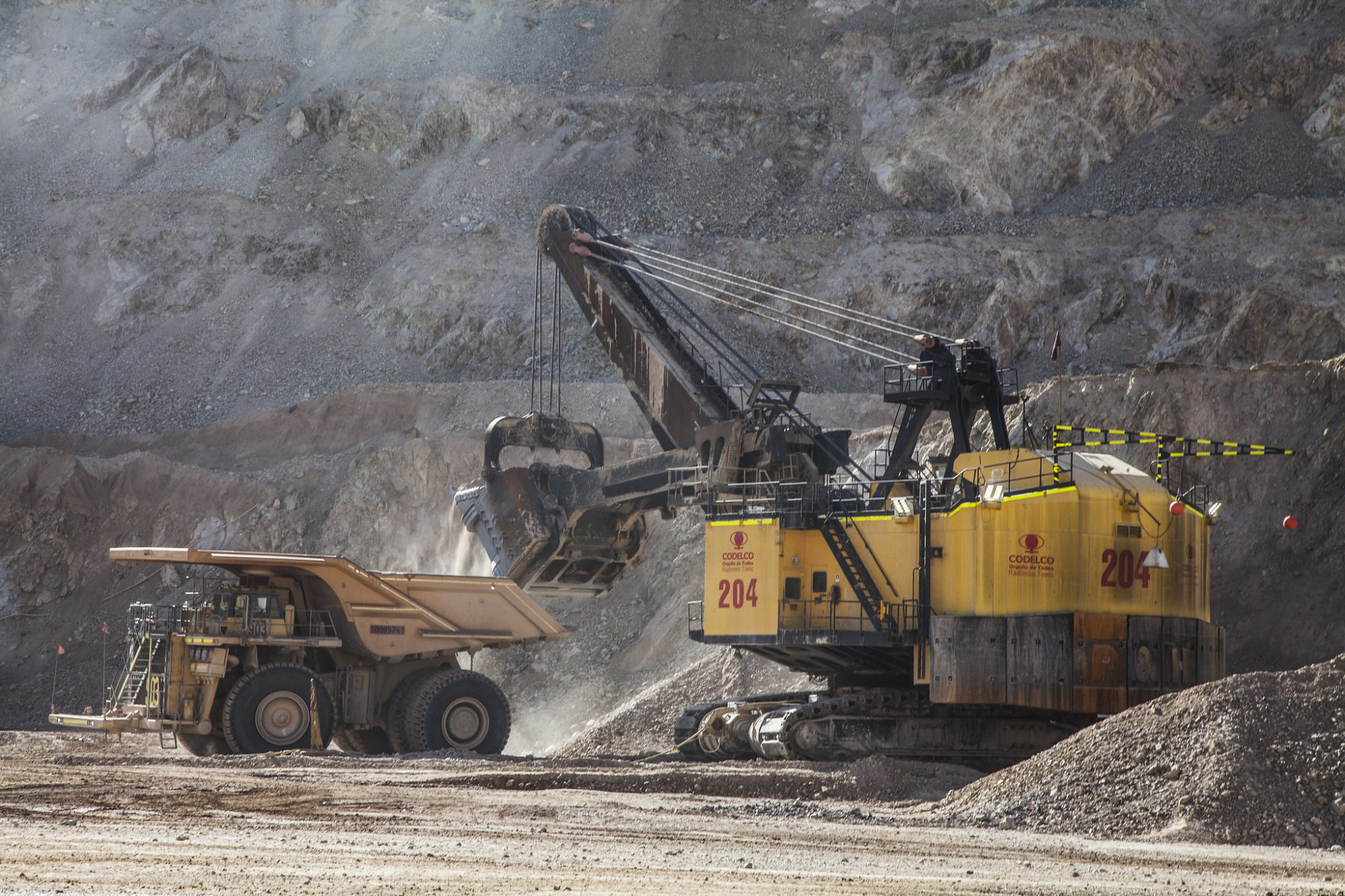In June 2024, Chile’s copper mining giant Codelco released its Annual Report for 2023 including its Sustainability Report, in which it laid out its most recent analysis and targets relating to climate change and reducing emissions.
Its medium-term sustainability strategy is driven by six commitments by 2030 – including reduction of emissions by 70%. How is it going to do this? At a high level for Scope 2 emissions, Codelco wants to ensure that 100% of its energy matrix is clean, reducing the carbon footprint through the replacement of all electricity supply contracts towards renewable sources.
 IM Editorial Director Paul Moore with Codelco’s Head of Climate Action, Pablo Contreras Silva at Exponor 2024
IM Editorial Director Paul Moore with Codelco’s Head of Climate Action, Pablo Contreras Silva at Exponor 2024
In January 2024, it renewed a contract with AES Andes for the Ministro Hales and Radomiro Tomic divisions, committing to supply up to 1.6 TWh/year of renewable energy between 2026 and 2040, thus ensuring that 70% of its energy supply will be coming from clean sources by 2026. And in May 2024, Codelco and Engie announced the modification of a electricity purchase and sale contract signed in 2007 between Codelco and Engie’s subsidiary, Central Termoeléctrica Andina SpA (CTA), with which the copper company ensured a 100% clean energy matrix by 2030.
It has also extended its contract with Pampa Elvira Solar which will allow Codelco to maintain the supply of green energy for the operation of its Gabriela Mistral Division for 10 more years.
Moving to electric vehicles, and certainly Codelco has been one of the most progressive large miners globally in converting its worker buses to electric. It recently added 30 Yutong electric buses at its Salvador Division which join another a large number that are already operating across El Teniente (103), Chuquicamata (45) and Andina (7) plus 65 recently added at Radomiro Tomic. To date the largest supplier of electric buses to Codelco has been Chilean company Reborn Electric Motors.
But of course, among the largest emitters are the surface and underground primary mining fleets. Codelco has also committed to achieving 100% electromobility in underground mines, incorporating emission-free technologies for transport vehicles. It has been a pioneer in Chile already in testing machines such as hybrid loaders and battery-powered light vehicles underground.
A 14 t class Epiroc ST14 battery LHD testing program also took place from November 2022 onwards at El Teniente. Codelco says that in one year it has avoided the consumption of 160,000 litres of diesel translates into 433 t less GHG released into the atmosphere. Further tests are planned with other BEVs including a Sandvik machine, with more details set to be released later this year. In utility and ancillary machines, Codelco has already deployed SmartDrive technology from Normet at Chuquicamta Underground including Charmec and Utimec units.
Moving to surface trucks, for the longer term, Codelco is focused on reducing carbon emissions from open pit operations by evaluating technologies, such as a study looking at the potential for a trolley pilot at Radomiro Tomic with at least 1 km of line – if it went ahead this would join the planned AMSA Los Pelambres and Collahuasi trolley lines as one of the first in the country.
To discuss its way forward, at the Exponor 2024 show in early June in Antofagasta IM Editorial Director Paul Moore sat down with Codelco’s Head of Climate Action, Pablo Contreras Silva. In this role he heads the team responsible for implementing the copper mining major’s whole decarbonisation and adaptation to climate change strategy. So this includes Scope 1, Scope 2 but also Scope 3 emissions.
He emphasised that Codelco’s Scope 3, ie indirect emissions, are also a major target currently: “Scope 3 is something not just us but the whole industry faces as it relates to the whole value chain. In Codelco’s case, Scope 3 accounts for 65% of our total emissions so it is something we need to address and we are doing that through various initiatives.”
One of these is that together with the Alta Ley Corporation, the Association of Industrial Mining Suppliers (Aprimin) and the National Mining Society (Sonami), Codelco has developed www.huellaminera.cl, a platform to measure, manage and reduce emissions associated with the inputs and products it receives from suppliers as much as possible.
Looking at Scope 1 and 2, as commercialisation of all battery mining trucks is some way off, what is Codelco looking at in terms of interim emissions wins? “As you know we have set ourselves ambitious targets for 2030 for Scope 1 and 2 and mining trucks account for 70-80% of our Scope 1 emissions. Like everybody else we are looking at the electrification of those trucks – but that is not something we are doing by ourselves. We are working directly with key OEMs – for example we are a member of the GHG Alliance with Komatsu. Plus, we are also working closely with OEMs and others via the ICMM’s Innovation for Cleaner, Safer Vehicles (ICSV) initiative.”
He confirmed that Codelco is looking at the potential for trolley assist, as well as other technologies like battery trucks as well as hybrid retrofits. He added: “It is a complex issue and the technology evolution is taking more time than we would have originally expected – so in the interim we are looking at other options.” He said these include but are not limited to biofuels, synthetic fuels such as e-fuels and other alternatives. And as has been stated by the other mining majors, BHP and Rio Tinto included, it will not be a one size fits all solution.
Chile is also set to host International Mining Events’ Electric Mine 2025 conference, being held May 13-15 at Centro Parque in Las Condes, Santiago.











